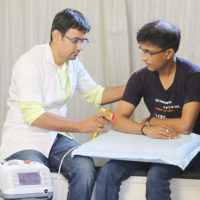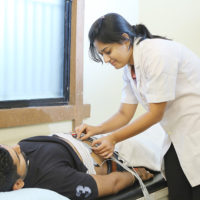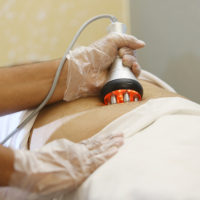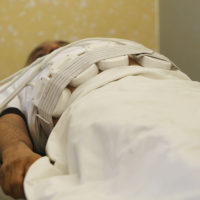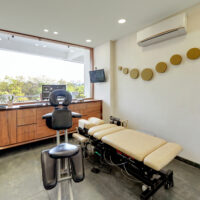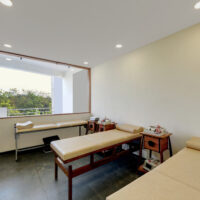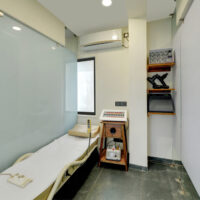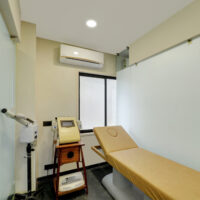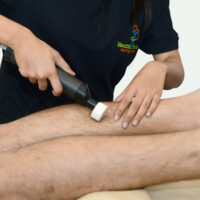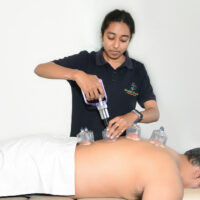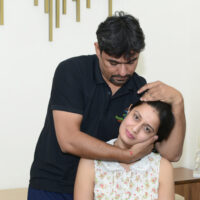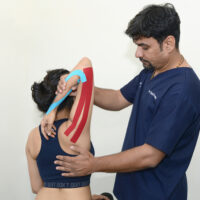A variety of factors can contribute to ankle pain. An ankle injury can be excruciatingly painful, preventing you from bearing weight. Even minor discomfort can make it difficult to go about your daily activities.
Ankle Pain
An ankle sprain is a common injury that occurs when the ligaments that support the ankle joint are stretched or torn, typically as a result of twisting or rolling the ankle. This can happen during physical activity, such as running or jumping, or as a result of an accidental fall or misstep.
Symptoms of an ankle sprain may include pain, swelling, bruising, and difficulty bearing weight on the affected ankle. In more severe cases, there may be a popping or snapping sound at the time of the injury, and the ankle may appear deformed or misaligned
- Proper Warm-up and cool-down before workout
- Practice proper footwear selection Avoid high heels and shoes with inadequate arch support.
- Use ankle braces or supports
- Strengthening the muscles around the ankle joint can provide better support and stability
- Improve balance and proprioception by including exercises that challenge your balance and proprioception. Balance boards, stability exercises, and single-leg exercises can help improve your body’s ability to maintain stability and prevent ankle sprains.
- Be mindful when walking or running on uneven surfaces, such as gravel, grass, or stairs
- Avoid overexertion and fatigue during workout
- Modify high-risk activities

Achilles Tendinitis
Achilles tendinitis is a common condition that occurs when the Achilles tendon, which connects the calf muscles to the heel bone, becomes inflamed or irritated. It is typically caused by overuse or repetitive stress on the Achilles tendon, such as running, jumping, or sudden increases in physical activity.
Symptoms of Achilles tendinitis may include pain and stiffness in the back of the ankle, especially after physical activity, swelling, tenderness, and a creaking or cracking sound when the ankle is moved.
- Gradually increase the intensity and duration of your exercises or sports to allow your body to adapt and avoid overuse injuries.
- Practice proper footwear selection Avoid high heels and shoes with inadequate arch support.
- Engage in regular stretching exercises to maintain flexibility in the ankles and surrounding muscles to prevent stiffness around the ankle
- Strengthening the muscles around the ankle joint can provide better support and stability
- Pay attention to any signs of pain, discomfort, or stiffness in your Achilles tendon, ignoring early warning signs can lead to worsening of the condition.
- Maintain a healthy weight of the body
- Proper Warm-up and cool-down before workout
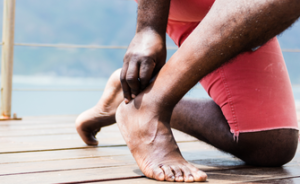
Retrocalcaneal Bursitis
Retrocalcaneal bursitis is a condition that occurs when the bursa located between the heel bone and the Achilles tendon becomes inflamed. The bursa is a small fluid-filled sac that helps to reduce friction and cushion the area around the Achilles tendon.
Symptoms of retrocalcaneal bursitis include pain, swelling, and tenderness at the back of the heel, particularly during activities such as walking, running, or jumping. The skin over the affected area may also be red and warm to the touch.
- Practice proper footwear selection Avoid high heels and shoes with inadequate arch support.
- Consider using orthotic inserts like heel pads or custom orthotics to provide additional support if needed.
- Engage in regular stretching exercises to maintain flexibility in the ankles and surrounding muscles to prevent stiffness around the ankle
- Strengthening the muscles around the ankle joint can provide better support and stability
- Gradually increase the intensity and duration of your exercises or sports to allow your body to adapt and avoid overuse injuries.
- Incorporate cross-training and alternate between different activities to avoid overuse of the area around the heel
- Maintain a healthy weight of the body
- Prior to engaging in physical activity or exercise, warm up your muscles and tendons with light aerobic exercises and dynamic stretches.

Ankle Arthritis
Ankle arthritis is a condition that occurs when the cartilage that cushions the joints in the ankle wears down over time, causing bone-on-bone friction and inflammation. This can cause pain, stiffness, and difficulty moving the ankle joint.
The most common type of ankle arthritis is osteoarthritis, which occurs as a result of wear and tear on the joint over time. Other types of arthritis that can affect the ankle include rheumatoid arthritis, post-traumatic arthritis, and gout.
Symptoms of ankle arthritis may include pain and stiffness in the ankle joint, swelling, warmth or redness in the joint, and difficulty moving the ankle.
- Excess body weight puts increased stress on the ankle joints, which can contribute to the development and progression of arthritis. Maintaining a healthy weight can help reduce this stress and decrease the risk of ankle arthritis.
- Engage in low-impact exercises like swimming, cycling or any cardio exercise in gym
- Strengthening the muscles around the ankle joint can provide better support and stability
- Practice proper footwear selection Avoid high heels and shoes with inadequate arch support. Consider using orthotic inserts or custom orthotics to provide additional support if needed.
- Avoid repetitive high-impact activities such as jumping or running on hard surfaces, can put excessive stress on the ankle joints.
- Use caution on uneven surfaces as they can increase the risk of ankle injuries that may contribute to arthritis.
- Give your ankles time to rest and recover after activities or periods of prolonged standing to prevent overuse and minimize stress on the joints.
- Engage in regular stretching exercises to maintain flexibility in the ankles and surrounding muscles to prevent stiffness around the ankle
- Pay attention to any signs of pain, swelling, or discomfort in your ankles.
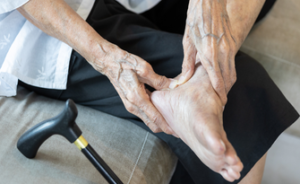
Ankle Fractures
An ankle fracture is a break or crack in one or more of the bones that make up the ankle joint. The most common type of ankle fracture is a lateral malleolus fracture, which occurs when the fibula bone on the outside of the ankle is broken.
Symptoms of an ankle fracture may include pain, swelling, bruising, and difficulty bearing weight on the affected ankle. In severe cases, the ankle may appear deformed or dislocated.
Fascial Distortion (FDM) Treatment
Infrared Therapy (*this are possible treatments after fracture healing)
Flexibility Training
Paraffin Wax Bath
- Proper Warm-up and cool-down before workout
- Practice proper footwear selection Avoid high heels and shoes with inadequate arch support.
- Use ankle braces or supports
- Strengthening the muscles around the ankle joint can provide better support and stability
- Improve balance and proprioception by including exercises that challenge your balance and proprioception. Balance boards, stability exercises, and single-leg exercises can help improve your body’s ability to maintain stability and prevent ankle sprains.
- Be mindful when walking or running on uneven surfaces, such as gravel, grass, or stairs
- Avoid overexertion and fatigue during workout
- Modify high-risk activities

YOUR NEXT STEPS!
-
Request An Appointment
-
Find the Root Cause and Receive A Custom Treatment Plan
-
Monitor Progress
-
Recover & Get Back to Life!
